Monthly economic brief: March 2022
The monthly economic brief provides a summary of latest key economic statistics, forecasts and analysis on the Scottish economy.
This document is part of a collection
Labour Market
Unemployment remains at low levels while payrolled employment rose sharply in February.
Official labour market statistics, payrolled employment and claimant count
- The latest labour market statistics for November 2021 to January 2022 in Scotland show there were 2.657 million people in employment (rate of 74.5%, up 0.6 percentage points over the year), 105,000 people unemployed (rate of 3.8%, down 0.5 percentage points) and 767,000 people economically inactive (rate of 22.4%, down 0.3 percentage points).[14]
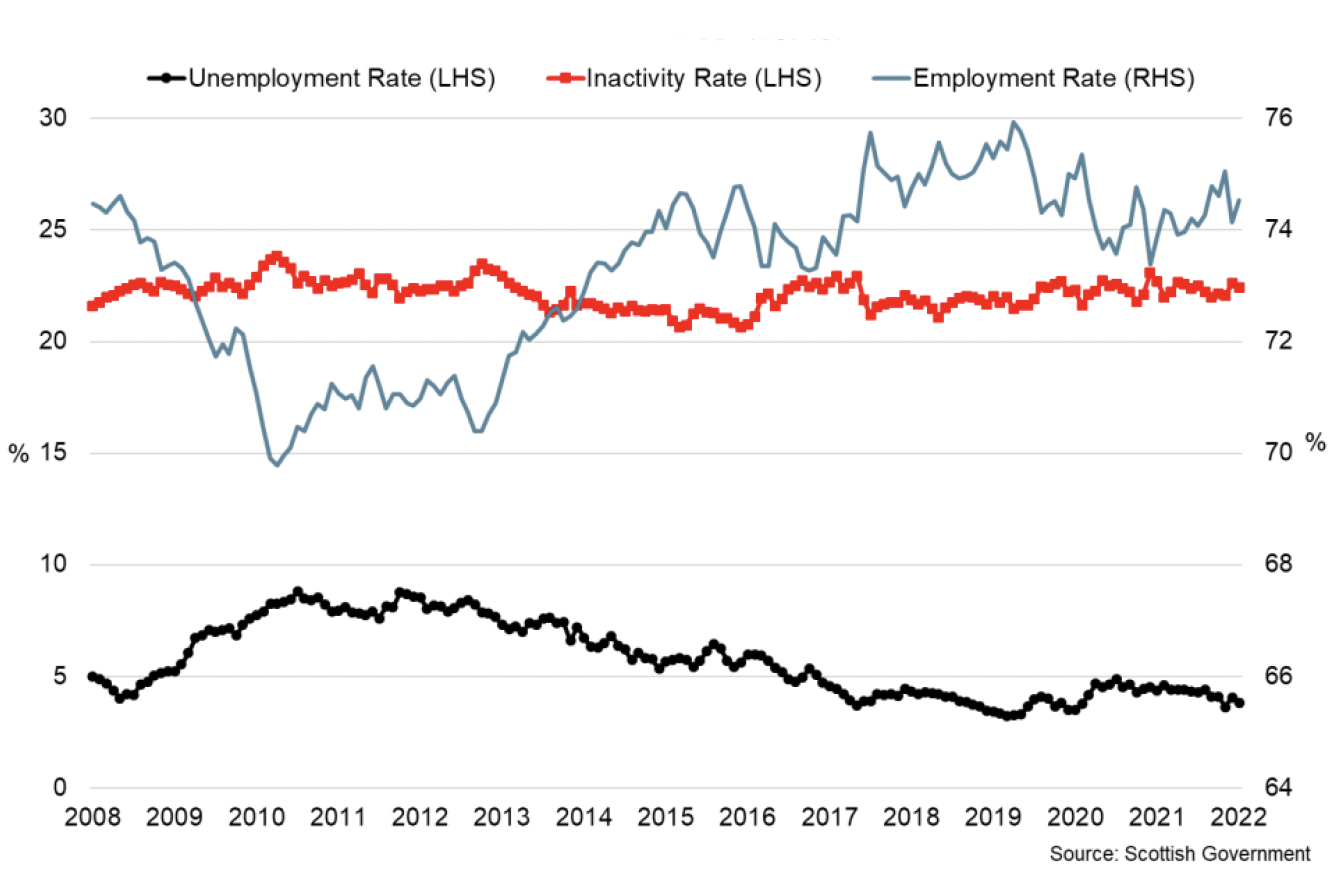
- Wider labour market indicators showed signs of further strengthening in February. Pay As You Earn (PAYE) Real Time Information flash estimates indicate the number of payrolled employees in Scotland increased by 22,000 in February to 2.42 million. This is 48,000 more than at the end of the Furlough scheme in September 2021 and 34,000 more than the pre-pandemic level in February 2020.[15]
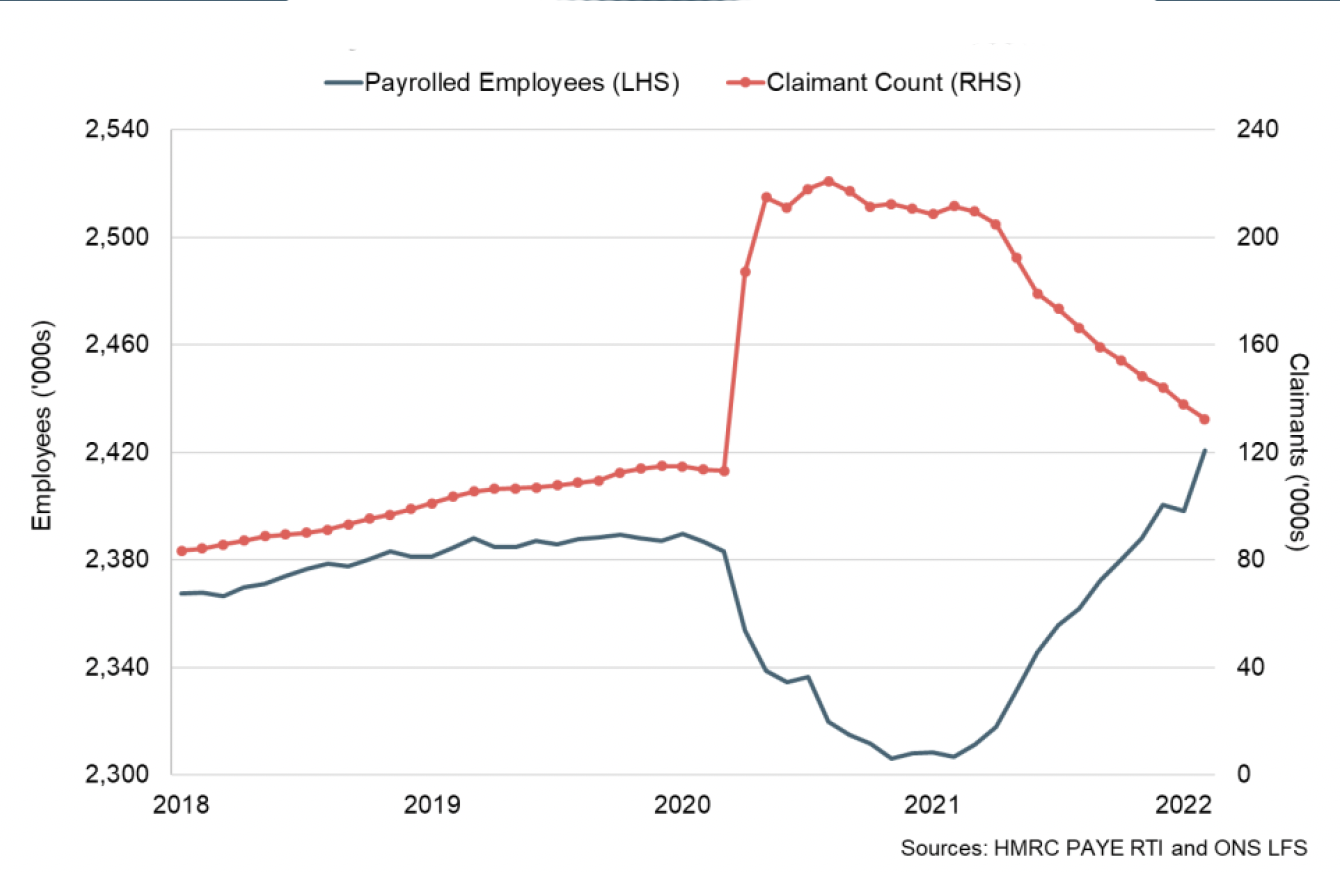
- Scotland's Claimant Count (the number of claimants of Job Seekers Allowance and claimants of Universal Credit claiming principally for the reason of being unemployed) also continued its downward trend in February, down 3.9% to 132,400; a claimant count rate of 4.1%.
- Overall, the claimant count has fallen 40.1% from its peak in August 2020 and 16.8% since September when the furlough scheme ended. However, it remains 18,700 (16.4%) higher than its pre-pandemic level in February 2020.[16]
- Further underlying changes continue to emerge in the labour market as it recovers from the pandemic. While employee numbers have risen above their pre-pandemic level, the overall level of employment remains below, reflecting that the number of self-employed has fallen.[17]
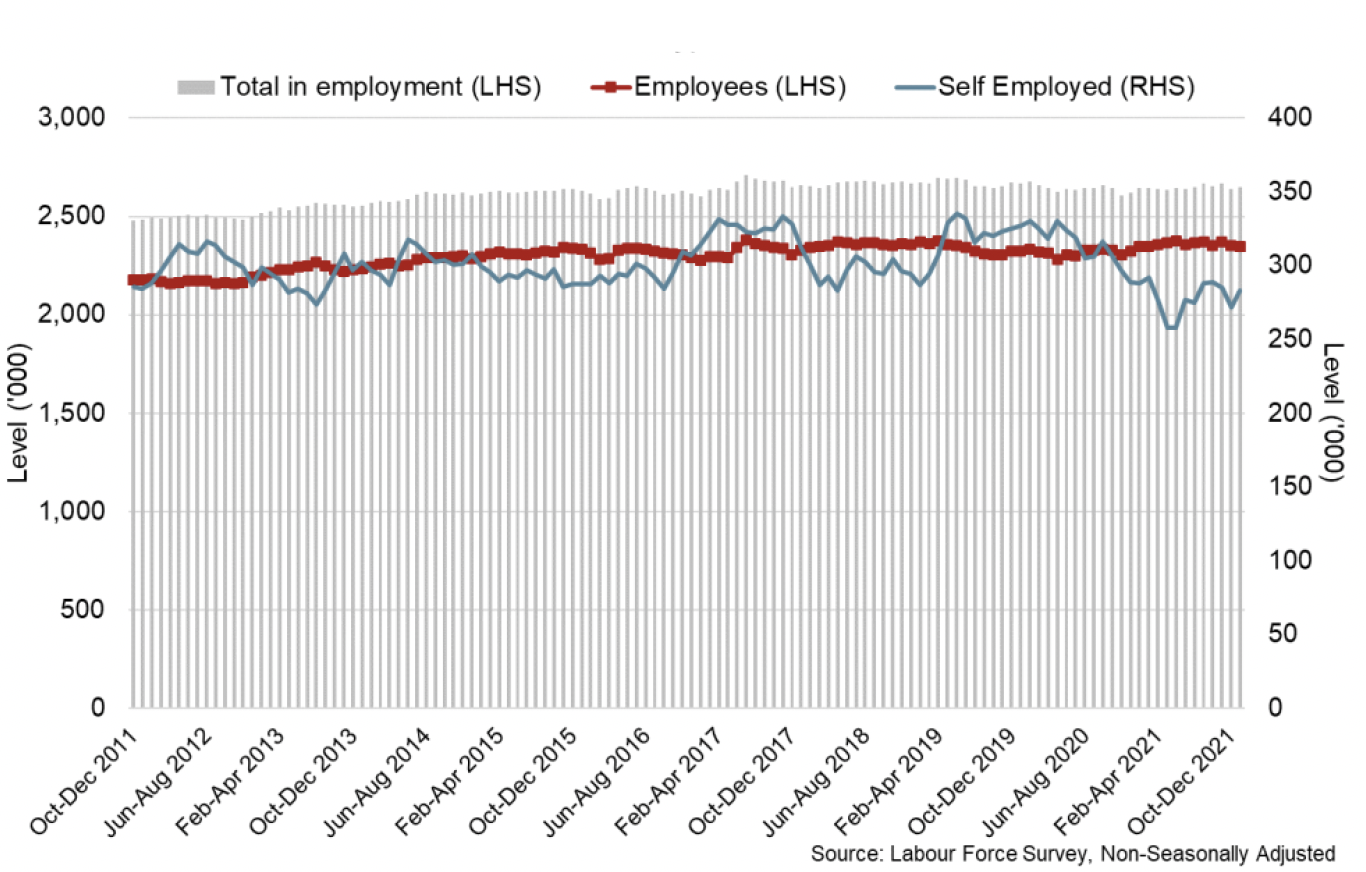
- One of the main impacts of the furlough scheme was that people worked fewer hours, even though they remained in employment. After falling heavily at the start of the pandemic, average actual weekly hours of work have now returned to around pre-pandemic levels. In November 2021 to January 2022, average total weekly hours was 31.5, up from 29.1 hours during the same period in November 2020 to January 2021 and up from 30.4 hours during the same period prior to the pandemic (November 2019 to January 2020).[18]
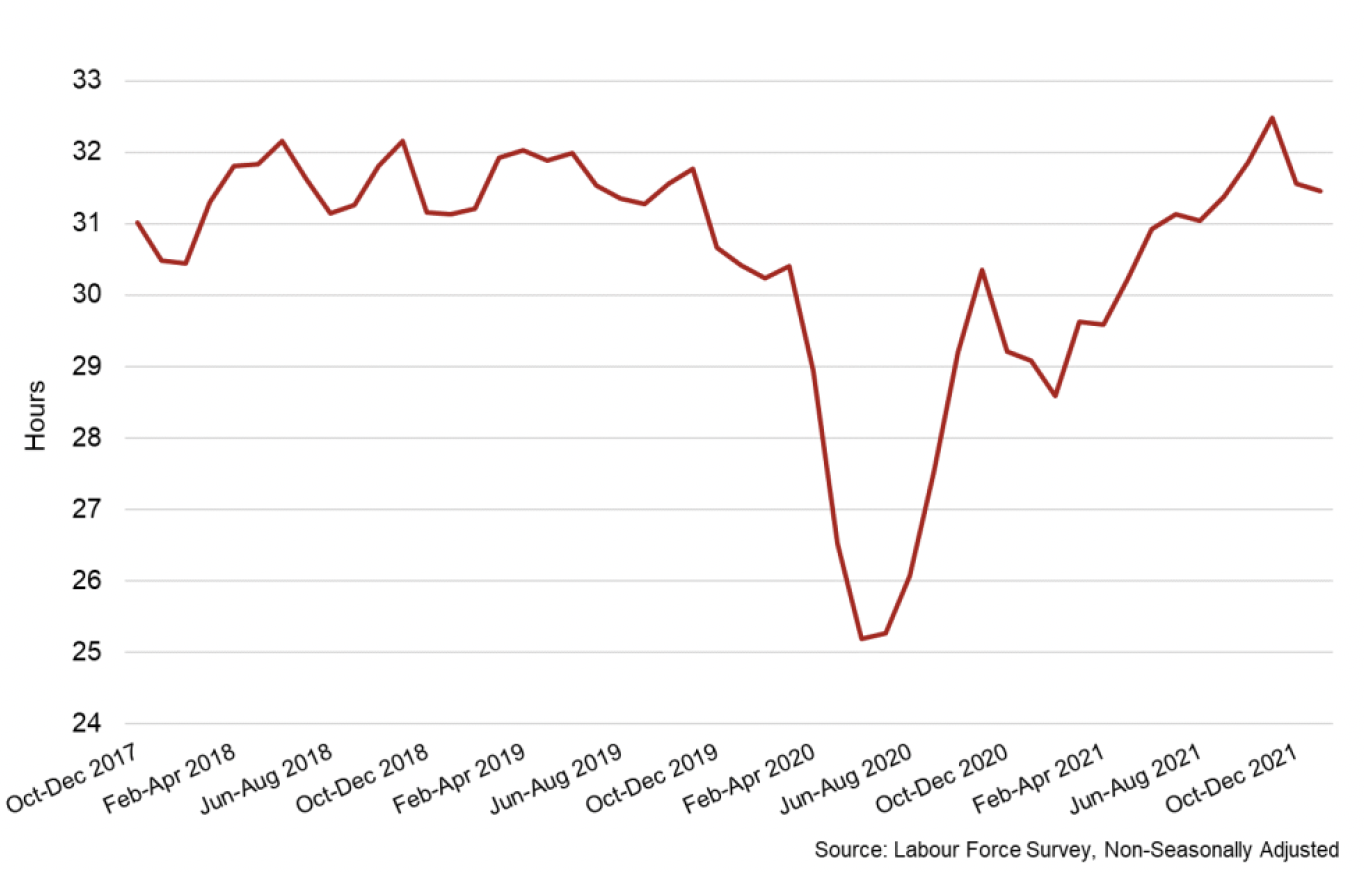
Demand for staff
- Business surveys have also signalled that labour market tightness has persisted into the start of 2022 with strong demand placing upward pressures on pay.
- The latest Report on Jobs signalled that overall demand for staff (vacancies) continued to grow in February (71.2, up from 69.6 in January) and remains high compared to historical standards. This is the first uptick in demand since October 2021, with demand for permanent staff stronger than that for temporary staff.[19]
- Supply side challenges in the labour market have also continued with candidate availability (labour supply) continuing to fall. However the rate of decline has moderated notably in recent months and is at its lowest rate since May 2021.
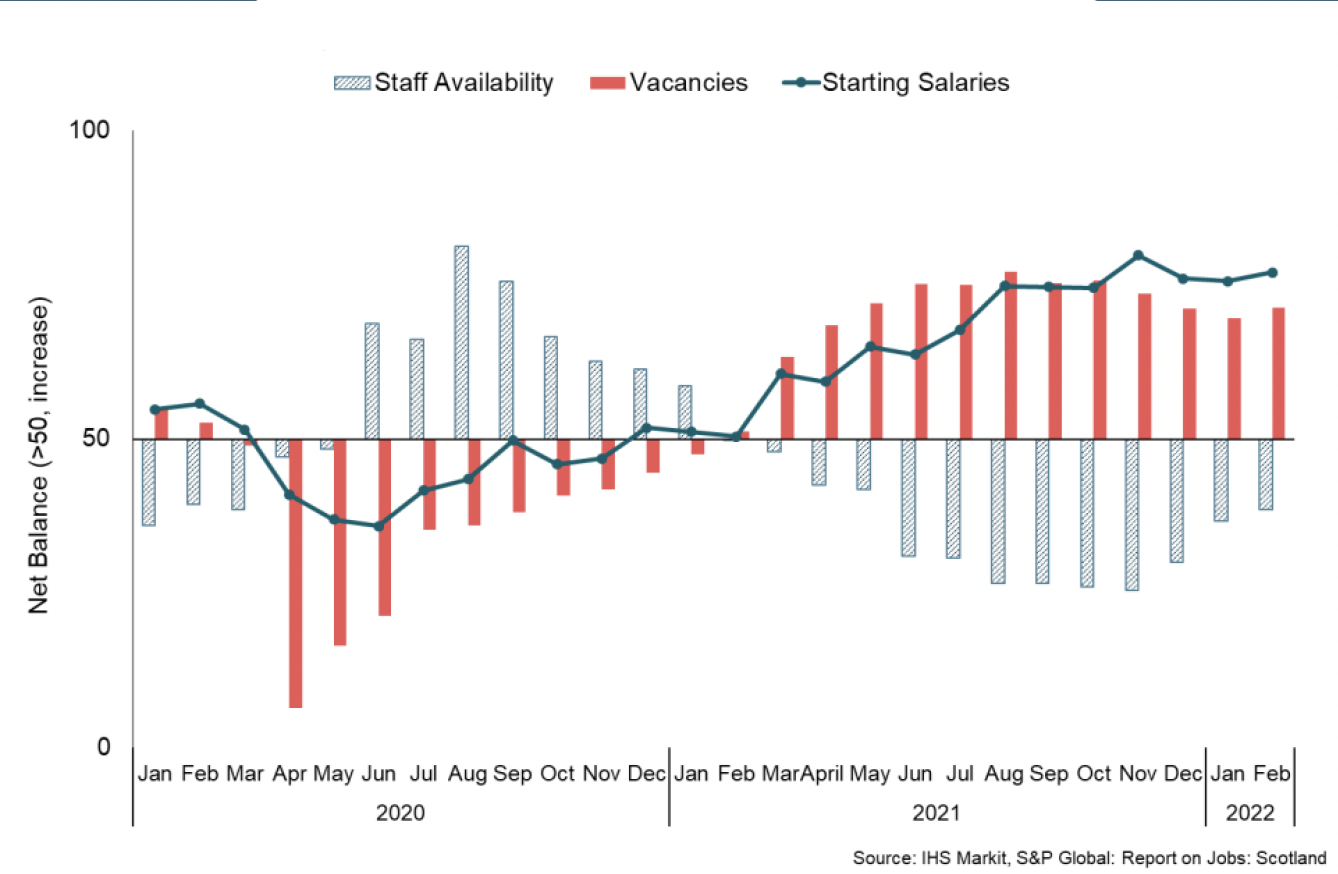
- More recent online vacancies data also signal that strong demand for staff continued throughout February, with online job vacancies 47.1% higher than in February 2020.[20]
- The strength in demand for staff, coupled with low unemployment, falls in candidate availability and anecdotal evidence of challenges in recruiting the necessary staff, meant upward pressure on starting salaries remained elevated in February, particularly for permanent roles.
- Labour shortages continue to affect a range of sectors with 38% off all businesses experiencing a shortage of workers into the start of March. The overall share has picked-up since the start of the year and remains most notable in accommodation and food services (48%), construction (47%), and the transport and storage (41%) sectors.[21]
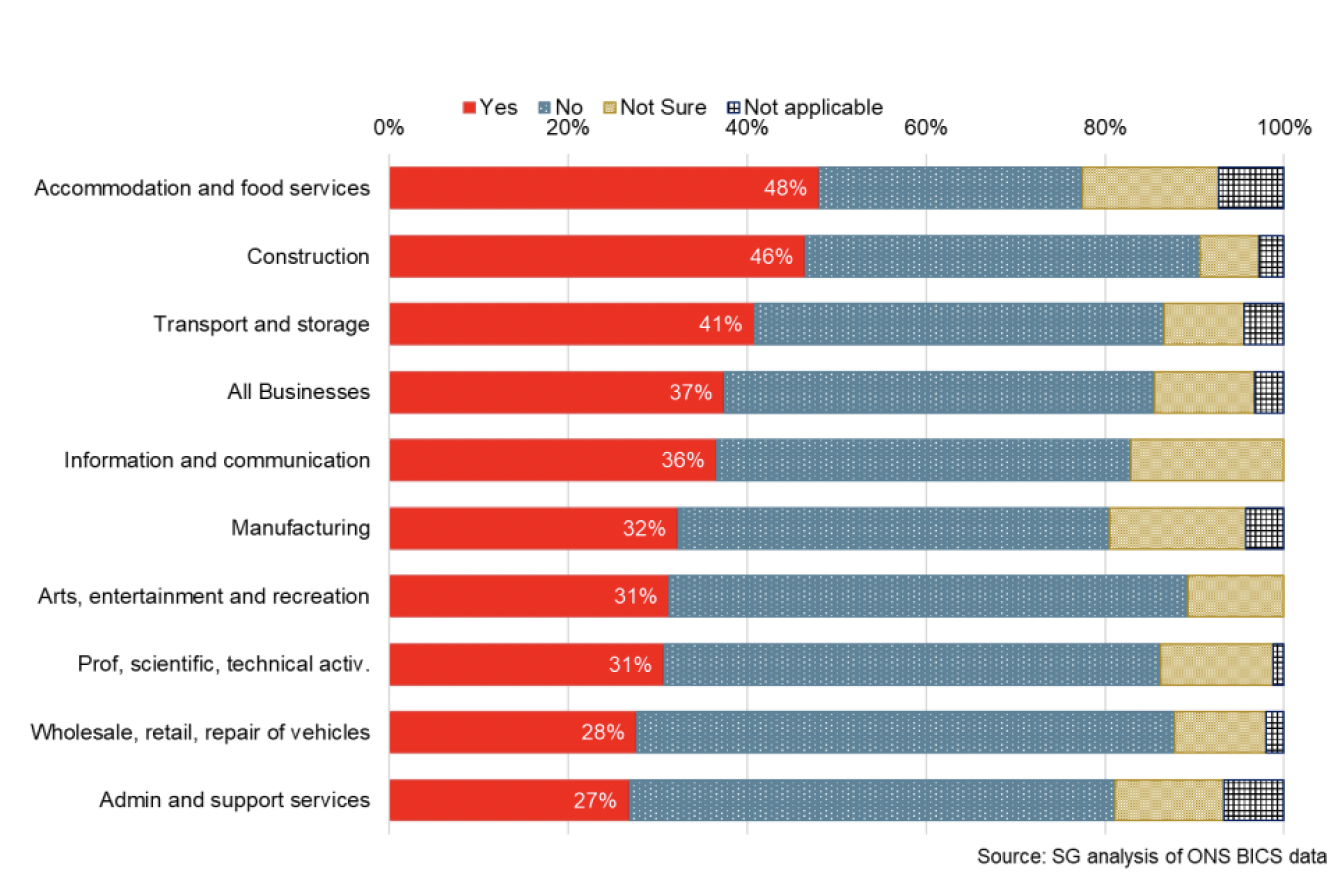
- Similarly, 41% of all businesses in February, reported their ability to fill vacancies remains more difficult than normal for the time of year. The share is slightly higher than in January, however is down from 47% in October, while the share of businesses reporting no difference in their ability to fill vacancies increased to 26% (up from with 22% in October).[22]
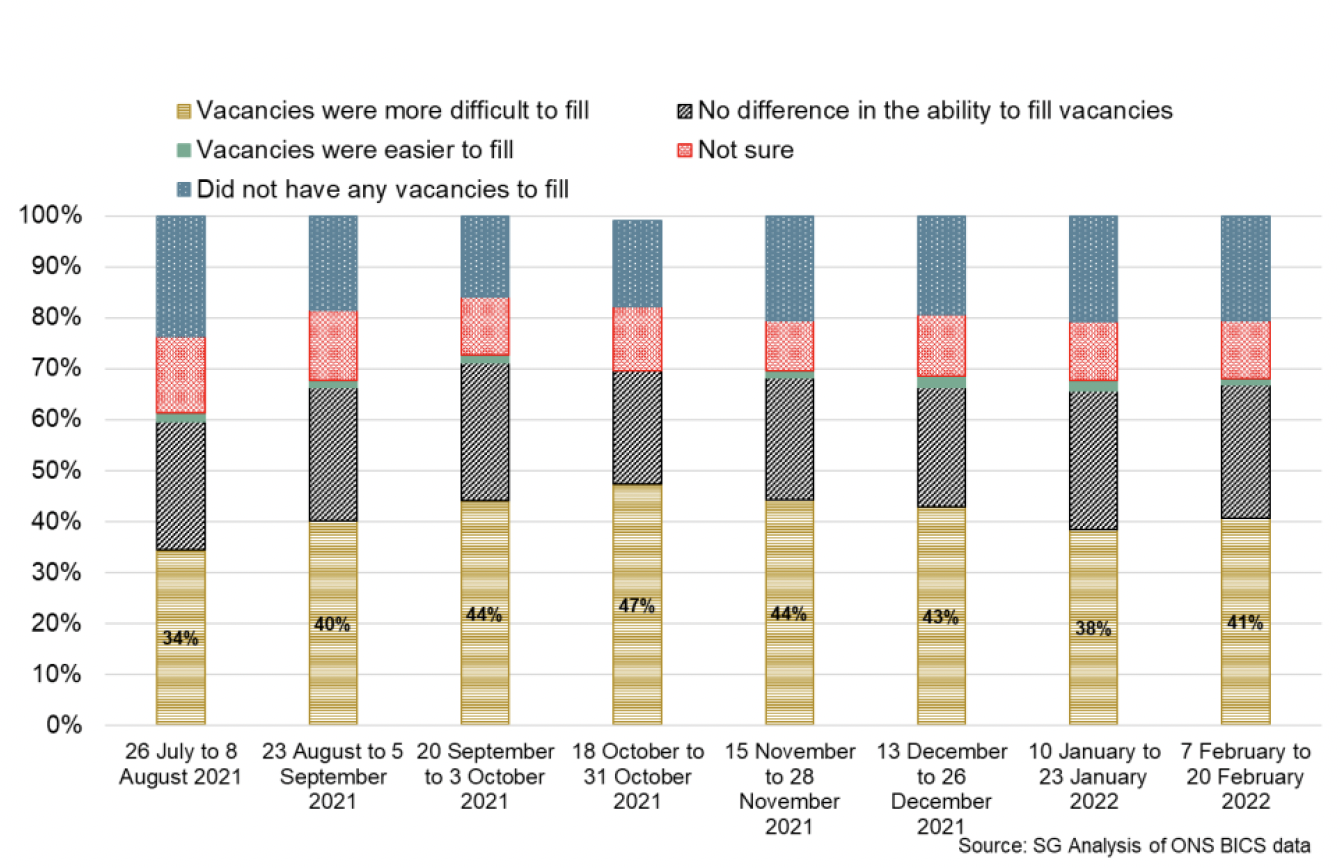
Earnings
- Mean PAYE monthly pay growth has continued to stabilise at the start of 2022 following significant volatility during the pandemic when mean pay initially fell sharply, strengthened over the course of 2020 and rebounded back above its pre-pandemic level in August 2020.[23],[24]
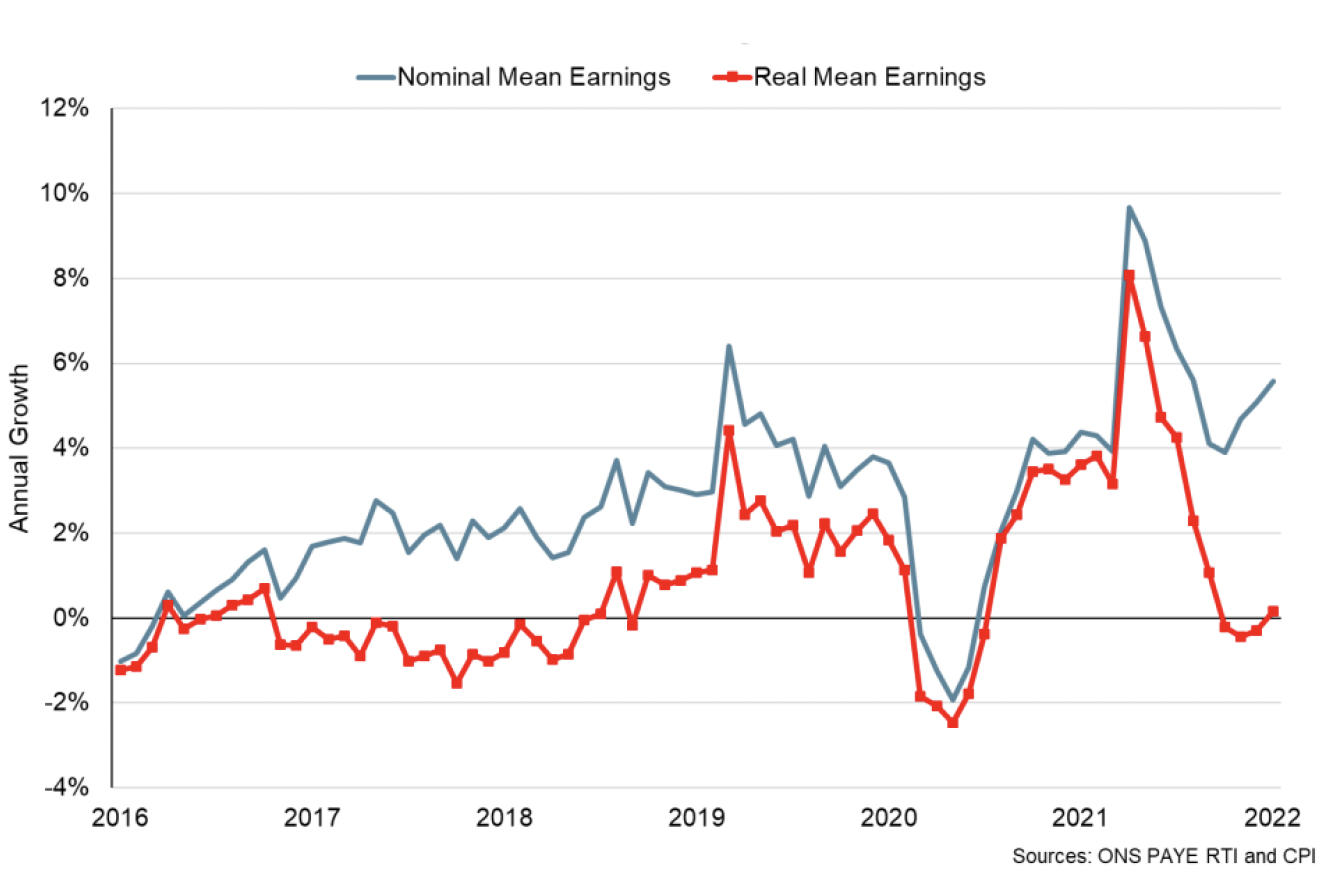
- Latest data show mean monthly pay grew by 1.2% over the month in January (UK: 1.8%), and grew 5.6% annually (UK: 7.3%) to £2,594 (UK: £2,854).
- Despite, the relatively high rate of pay growth, the CPI annual inflation rate was 5.5% in January and subsequently rose to 6.2% in February, and is weighing notably on real earnings growth.
Contact
Email: OCEABusiness@gov.scot
There is a problem
Thanks for your feedback